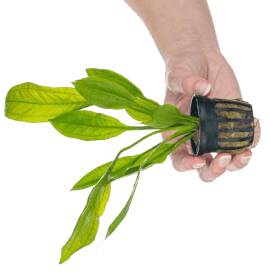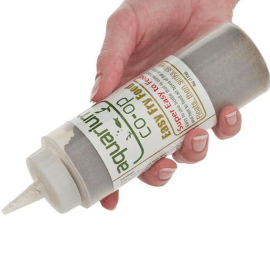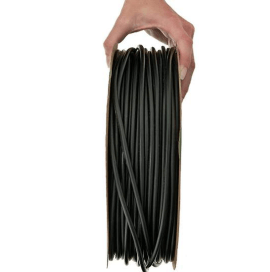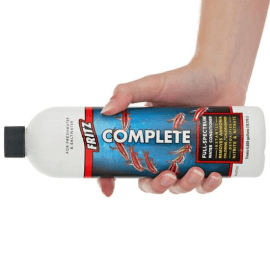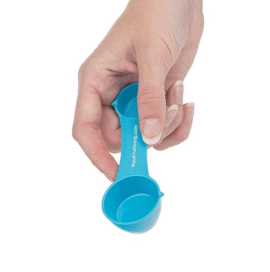Top 10 Live Foods to Feed Your Aquarium Fish
If you are looking for the very best fish food to feed your aquarium animals, most veteran fishkeepers will agree there is nothing that tops live foods. This premium food is the closest thing to what fish eat in nature and has numerous benefits. The movement of the food entices the fish to eat, which is especially useful if they are underweight or growing and need to consume more nutrients than usual. Plus, hunting provides both physical and mental enrichment for your aquarium animals and allows you to see interesting behaviors that might not appear when feeding flakes. Finally, live foods are one of the fastest ways to condition your fish for breeding. Learn about these 10 popular live foods and how to culture some of them in your own home.
1. Baby Brine Shrimp

Peacock gudgeon fry eating baby brine shrimp
When it comes to raising baby fish or encouraging adult fish to spawn, you can’t beat baby brine shrimp. These tiny, saltwater crustaceans from the Artemia genus are born with highly nutritious yolk sacs that are packed with proteins and healthy fats. To hatch them at home, just soak brine shrimp eggs in salt water, which should take about 18–36 hours if the water is heated to 74–82°F (23–28°C). When you see hundreds of tiny, pink dots swimming around, shine a light to the base of your brine shrimp hatchery to attract the brine shrimp and separate them from their egg shells. Follow our exact recipe for hatching brine shrimp by reading the full article.
2. Snails

Malaysian trumpet snails
Many fish — like puffers, loaches, and larger South American cichlids — enjoy eating live snails. For pufferfish, the snail shells help to grind down their ever-growing teeth so they won’t get too long. To produce a steady supply of these aquatic gastropods, set up a separate aquarium or tub as your breeding factory for bladder, ramshorn, or Malaysian trumpet snails. They need hard water with higher pH and GH, or else they may develop holes in their shells. If you have soft water like us, we like to use 1–2 inches (3–5 cm) of crushed coral as substrate and then dose mineral supplements like Seachem Equilibrium if needed. Then we feed Easy Shrimp and Snail Shells, Xtreme Shrimpee Sinking Sticks, and other fish foods high in calcium. For more information, learn about the top 7 freshwater snails.
3. Vinegar Eels

Typically, egg-scattering fish such as tetras, rainbowfish, and killifish produce teeny-tiny fry that are too small to eat regular fry food. Vinegar eels are harmless, white roundworms that are very easy to culture and are perfect for feeding babies until they are big enough to eat baby brine shrimp. Simply fill a wine or other long-necked bottle with 50% apple cider vinegar, 50% dechlorinated water, and a few slices of apple. Once the vinegar eels have reproduced enough, you can harvest them by adding some filter floss and dechlorinated water into the neck of the bottle so that the vinegar eels swim out of the vinegar into the fresh water. Then use a pipette to remove some of the vinegar eels and feed them to your fish fry. Read our step-by-step instructions to make your own vinegar eel cultures.
4. Micro Worms

Kribensis fry eating microworms
Banana worms, walter worms, and micro worms are also nematodes or roundworms used as live fish food. They are slightly bigger than vinegar eels but still smaller than baby brine shrimp and therefore can be fed to tiny fry. We like to start our cultures in small plastic containers with instant mashed potatoes. Cut a breathing hole in the plastic container’s lid and stuff it with filter floss to prevent unwanted pests from entering. To harvest them, just swipe your finger along the sides of the plastic tub where the microworms have climbed up and then dip your finger directly into the tank to feed the fish. Check out this easy tutorial for more details.
5. Daphnia

These aquatic crustaceans are roughly 1–5 millimeters long and therefore make excellent food for small to medium fish. They breed quite rapidly, so to keep the water parameters stable and prevent the population from crashing, we recommend keeping them in as much water as possible. Use old tank water or aged, dechlorinated water for water changes since they are very sensitive to chlorine. Also, long exposure to light and cooler temperatures around 68°F (20°C) are preferred for optimal reproduction. Daphnia are filter feeders, so whenever the water is no longer cloudy with food, feed them active dry yeast, green water, or spirulina powder. They are easily harvested by slowly scooping a fine-meshed aquarium net through the water. Learn more in our article about culturing daphnia.
6. Infusoria

What do most newborn fish eat in the wild? Usually microorganisms such as microalgae, protozoans, and invertebrate larvae. Therefore, many fish breeders make their own cultures of freshwater plankton (i.e., infusoria) to feed tiny fry. There are many methods, but one of the most popular is to fill a large jar with a few quarts (or liters) of old tank water and squeeze in some mulm from your filter media. Drop a 1-inch (3 cm) section of banana peel or ½ teaspoon of instant yeast to feed the infusoria. For faster results, warm the water to 78–80°F (26–27°C) and you should see some tiny, moving specks within a couple of days. If the water turns from cloudy to clear, then the infusoria are consuming all the food you provided, and the culture is ready for harvesting. Suck out some of the water with a pipette and feed them directly to your baby fry.
7. Blackworms
Live blackworms are a great food for bottom dwellers because they sink to the ground, and many breeders believe they are the best way to condition corydoras catfish. They can be challenging to propagate at home, so in the United States, farms grow large-scale cultures of California blackworms in man-made ponds. You can usually purchase blackworms either from your local fish store or online directly from the farms. When you receive them, pour out the blackworms into a fine-meshed fish net and rinse them thoroughly with dechlorinated water chilled to 40–55°F (4–13°C). To make sure they are not too crowded, keep them in a wide, shallow container so that the worms are not piled on top of each other more than 0.5 inches high (1.3 cm). Pour in just enough cold, dechlorinated water to cover the blackworms, and place the container (without a lid) in the refrigerator. To keep your worms alive until they are fed to your fish, repeat this process of rinsing the worms every day with prechilled, dechlorinated water, or else they will quickly foul the water.
8. Grindal and White Worms
Once your fish fry have graduated from vinegar eels and micro worms, you can move onto Grindal worms (about 0.5 mm in diameter) and then eventually white worms (about 1 mm in diameter). Start by sterilizing the substrate (e.g., organic potting soil, peat moss, or coconut fiber) from mites and other pests. You can use an oven to heat the dirt for 30 minutes at 180–200°F (82–93°C), or moisten the substrate and microwave it in 90 seconds intervals until it reaches 180–200°F (82–93°C).
Place the substrate in a plastic container or tub and cover until it has cooled; add a little dechlorinated water to moisten it some more if needed. Afterwards, add the starter worm culture and some food (e.g., bread and yogurt, oatmeal, instant mashed potatoes, or even fish food) to the surface of the substrate. Place a deli cup lid on top of the food. Then cut a breathing hole in the plastic container’s lid and adhere a piece of fabric to cover the hole and prevent pests from entering. Finally, place the lid on the plastic container.
Grindal worms do well in room temperatures of 70–75°F (21–24°C), whereas white worms must be stored around 55°F (13°C) in a cool basement or wine chiller. To harvest them, remove the deli cup lid on top of the food, wipe off some worms with your finger, and dip them in a small cup of water to rinse them before feeding your fish.
9. Bugs

Mealworms
Insects and insect larvae are a big part of many fish’s natural diets, and their exoskeletons provide good roughage that helps improve fish digestion. You can buy feeder insects — like crickets, dubia roaches, and mealworms — from reptile stores, and some people even raise their own dubia roach colonies. Red wigglers and earthworms are available at certain pet stores and bait shops and can be cultured at home as well.
To harvest insects from the wild without introducing potential parasites, set a 5-gallon bucket of dechlorinated water outside and wait for the mosquitos to lay their eggs. Use a fine-meshed net to scoop up mosquito larvae from the water surface, and make sure to harvest every day or else they will develop into adult mosquitos.
10. Live Fish
We personally do not sell feeder fish at Aquarium Co-Op because they have a higher likelihood of spreading disease to your aquarium and most people do not bother quarantining feeder fish. Plus, goldfish and minnows contain high levels of thiaminase and, when consumed in large amounts, can prevent your predator fish from getting enough thiamin (or vitamin B1) and cause all sorts of health issues. To avoid nutrient deficiencies, the key is to provide a variety in diet and not just feed one type of food all the time.
That being said, some hobbyists raise their own feeder fish at home to minimize the risk of infection. For example, livebearers (or fish that bear live young) reproduce very quickly, so removing some of the offspring will help prevent the colony from getting too big. When breeding cherry shrimp, it may be necessary to cull the less colorful individuals to ensure that the line improves in quality over time. Feeding live fish or invertebrates is not for everyone, but it is a natural part of a predator’s life.
Most live cultures can be purchased online or from local hobbyists, so find out which foods are well-suited for your fish and give it a try. Also, we recommend always making extra cultures to have a backup just in case the first culture crashes and is no longer viable. Best of luck on your live food journey, and make sure to check out the tutorial for our favorite live food, baby brine shrimp.
